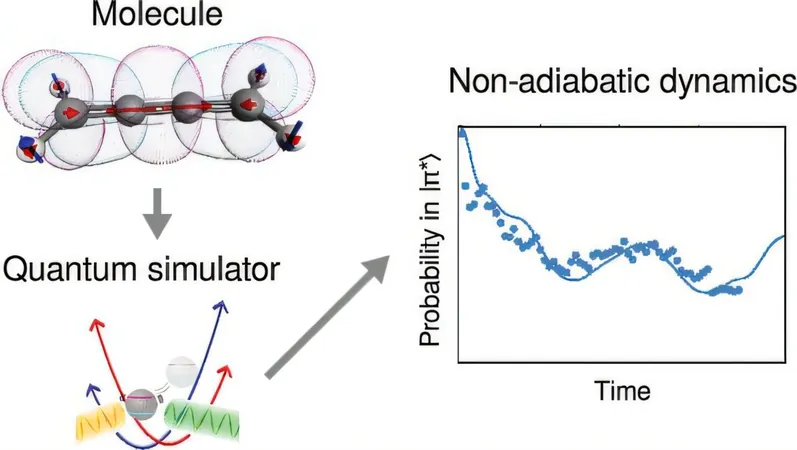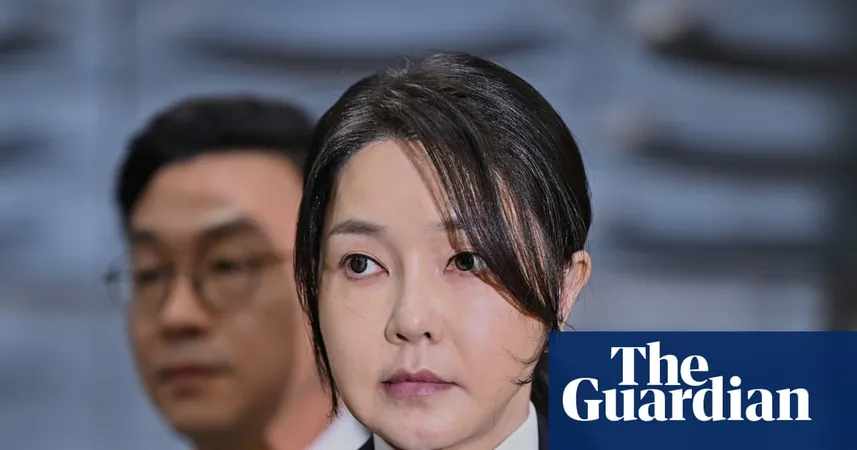
Breakthrough in Quantum Chemistry: Australian Researchers Make Light Work of Molecule Simulations
2025-05-17
Author: Michael
Imagine a molecule absorbing light and instantly launching into a dizzying dance of quantum transformations! Electrons leap between energy levels, atoms vibrate madly, and chemical bonds shift— all in the blink of an eye. This remarkable ballet of atoms is at the heart of vital processes such as photosynthesis, sunlight-induced DNA damage, solar cell efficiency, and even cancer therapies!
Yet, simulating these rapid chemical reactions has remained a formidable challenge. Traditional computers struggle to keep up with the extraordinary computational demands of accurately capturing the quantum behavior involved.
Enter quantum computers—machines designed to handle quantum phenomena seamlessly. These sophisticated devices are not just capable of calculating static molecular energies, but an exciting new study has shown they can also model dynamic molecular behaviors over time.
Published in the *Journal of the American Chemical Society*, this groundbreaking study reveals how researchers successfully simulated the behavior of real molecules after they absorbed light.
Unlocking the Secrets with Trapped-Ion Quantum Computing
The study utilized a trapped-ion quantum computer, which operates by manipulating individual atoms locked in a vacuum chamber through electromagnetic fields. This setup allows researchers to harness the power of quantum bits (qubits) alongside the vibrations of atoms, known as "bosonic modes," to achieve unprecedented simulation accuracy.
This innovative technique—dubbed mixed qudit-boson simulation—dramatically shrinks the required size of quantum computers needed for such simulations.
The researchers successfully modeled three fascinating molecules—allene, butatriene, and pyrazine—all of which exhibit intricate electronic and vibrational interactions upon light absorption, making them perfect candidates for this type of simulation.
Remarkably, their simulations slowed the fast-paced interactions by a staggering factor of 100 billion, transforming femtosecond events into observable milliseconds.
A Quantum Leap in Efficiency
What sets this study apart is the remarkable efficiency of their quantum computer approach. While a traditional quantum computer would require an unmanageable 11 qubits and approximately 300,000 entangling operations—far beyond today's capabilities—these researchers achieved their results using just a single trapped ion and one laser pulse.
Their method is estimated to be at least a million times more resource-efficient than conventional quantum methods.
In addition to simulating complex behaviors, the researchers also explored "open-system" dynamics, capturing how molecules interact with their environments. By introducing controlled noise, they modeled energy loss in a way previously deemed too complex for classical computers.
The Future of Quantum Chemistry
This pioneering work represents a monumental step toward advancing quantum chemistry. Despite the current limitations in quantum computer scale, the researchers demonstrate that even small, well-crafted experiments can tackle significant scientific challenges.
As the race continues to refine quantum simulations, building up to around 20 or 30 ions could soon unlock the secrets of chemical systems too intricate for classical supercomputers. This advancement could herald groundbreaking breakthroughs in drug discovery, clean energy solutions, and deepen our understanding of the chemical processes underpinning life itself.
Stay tuned as researchers journey further into the quantum frontier, transforming our grasp of chemistry and revolutionizing technology!









 Brasil (PT)
Brasil (PT)
 Canada (EN)
Canada (EN)
 Chile (ES)
Chile (ES)
 Česko (CS)
Česko (CS)
 대한민국 (KO)
대한민국 (KO)
 España (ES)
España (ES)
 France (FR)
France (FR)
 Hong Kong (EN)
Hong Kong (EN)
 Italia (IT)
Italia (IT)
 日本 (JA)
日本 (JA)
 Magyarország (HU)
Magyarország (HU)
 Norge (NO)
Norge (NO)
 Polska (PL)
Polska (PL)
 Schweiz (DE)
Schweiz (DE)
 Singapore (EN)
Singapore (EN)
 Sverige (SV)
Sverige (SV)
 Suomi (FI)
Suomi (FI)
 Türkiye (TR)
Türkiye (TR)
 الإمارات العربية المتحدة (AR)
الإمارات العربية المتحدة (AR)